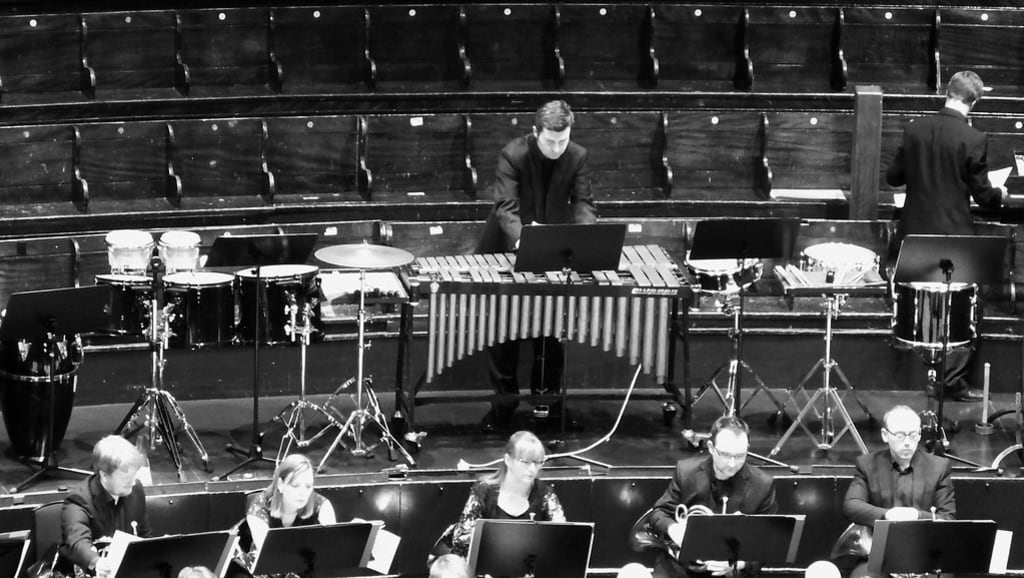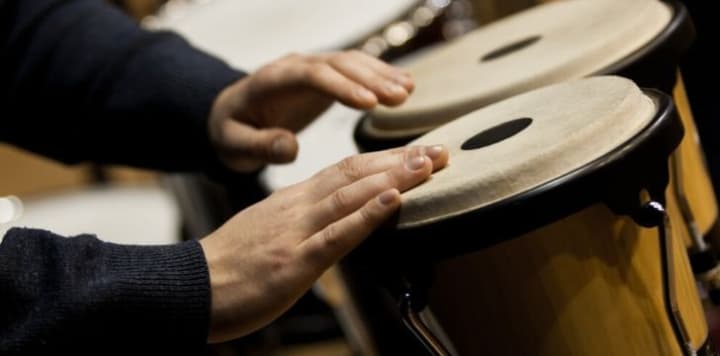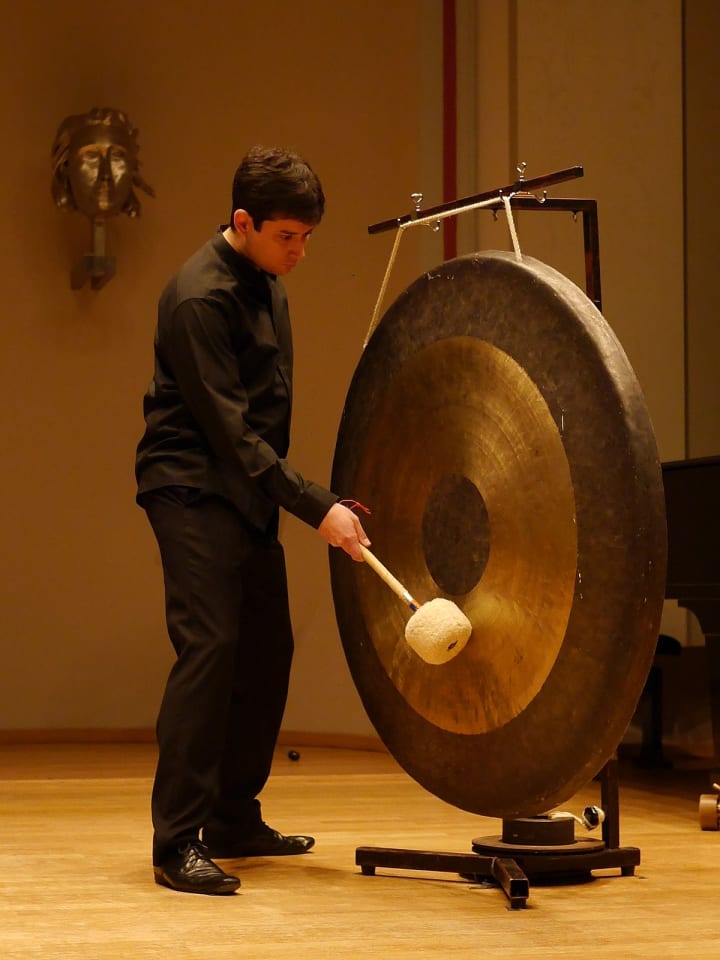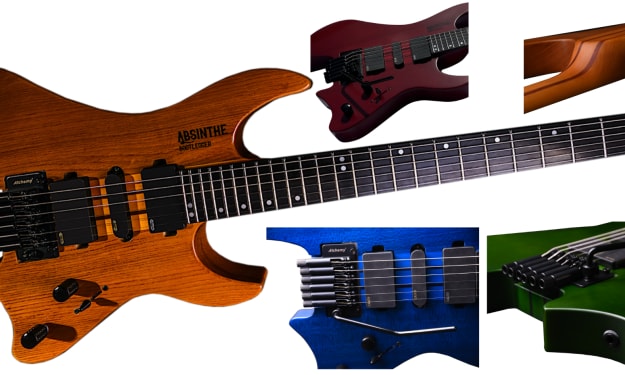Percussion Instruments
A look at the instruments most often used in an orchestra

The word “percussion” comes from the Latin for “to strike hard”, so percussion instruments are generally those that make a noise when they are hit. The most common means of doing this is with a beater or stick of some kind, but there are several variations on the theme. Instruments that are shaken, such as maracas, also count as percussion instruments.
Technically, a piano is a percussion instrument, because the strings are hit by hammers, but a harpsichord is not, because the strings are plucked.
An orchestral percussionist has to know how to play a huge range of instruments, often switching between them at short notice. Although it is not difficult to get a sound out of a percussion instrument, the art is to get exactly the right tone and volume, and to produce the sounds at precisely the right time; when the percussionist gets it wrong, everyone know about it!
Percussion instruments can be divided broadly into two categories, namely those that have a definite pitch and those that do not. The former are generally used to play melodies, such as xylophones, glockenspiels and tubular bells, whereas the latter are used for rhythmic effects, including drums of several kinds, cymbals, triangles, castanets and gongs.
Although the instruments mentioned here are mostly associated with orchestras, percussion is hugely important to musical ensembles of many different kinds, including military marching bands, rock groups, jazz bands and folk music of many different traditions.
Timpani
Of the drums, the timpani or kettledrums are the most complicated and difficult to play, and the orchestral timpanist normally plays nothing else, with the other percussionists looking after the rest of the instruments. A set of timpani comprises four drums, each being a large copper bowl, of varying sizes, over which a membrane is stretched.

Each drum produces its own note, and it is essential that the timpanist has tuned each drum correctly for the piece being played. This is done by adjusting the tension of the skin, which in turn is done by turning handles around the rim of the drum. A foot pedal can also be used to adjust the pitch during the performance. A timpanist may have to retune his drums while the other instruments are playing, such as during a slow movement when timpani are not usually required. He can often be seen with his ear close to the membrane, tapping the drum very softly so that only he can hear it.
Differences in the tone and quality of the sound will also be produced according to exactly where on the skin the drum is hit, how hard, and what kind of beater is used. A timpanist will often use four or more types of beater during a piece, their coverings varying from soft to hard.
Although the timpanist’s job may look easy it is far from being so. Timpanists usually have years of orchestral experience behind them before they take on the role, otherwise they are unlikely to have the necessary sensitivity.
Unpitched drums
The other drums which are most commonly seen (and heard) on the concert platform are the side drum, bass drum and tenor drum. The side drum is notable for having “snares” of stretched wire or nylon on one side, hence it is also known as the snare drum. It is normally hit with wooden sticks (sometimes wire brushes, especially in jazz bands) and produces a sharp sound when firmly hit, the snares producing a rattling sound. Rapid beats produce a “drum roll”.

The huge bass drum is usually mounted on its side, suspended on a frame, making a deep booming sound when hit with large felt-covered beaters. It is used to simulate thunder when rolled softly.

The tenor drum is a deeper version of the side drum, but without snares.
Other unpitched instruments
Bongos and conga drums are also sometimes used on the concert platform, although associated more with Latin American and African music. Bongos are small drums that come in pairs and are traditionally held between the knees and hit with the hands, although in the orchestra they are usually mounted on a stand and often hit with sticks. The conga is a tall and narrow bass drum.

Cymbals are brass discs that, in the orchestra, are usually held, one in each hand, and bashed together. The sound can last for a long time if they are not damped. In jazz and rock bands it is normal to mount single cymbals on stands so that they can be hit with sticks, or in a “hi-hat” arrangement that allows them to be played via a foot pedal that raises one cymbal, mounted horizontally, and allows it to fall on to the other.
A tam-tam is a large gong suspended on a frame that is hit by felt-covered beaters to produce a rolling “oriental” sound.

The tambourine, which is associated with Salvation Army bands but has a very long history going back to ancient times, is a small hand-held drum that has several pairs of metal discs mounted in the frame. These rattle when the drum is hit with the hand, or the tambourine can simply be shaken.
The triangle is only a short metal bar bent into a triangle shape and suspended from a frame, but when hit with a metal rod, either with single beats or rattled within the frame, it can be heard at some distance.
Various other items can be hit or shaken, such as the whip (or slapstick) which is two pieces of wood hinged together, castanets, maracas, claves (two hollow sticks that are hit against each other) and woodblocks.
Pitched instruments
The category of pitched percussion instruments includes several that imitate bells. Tubular bells are metal tubes hanging in a frame such that they resemble a giant set of pan pipes. They are hit with one or more leather mallets and can sound like church bells.

The glockenspiel comprises thirty metal plates of various sizes arranged in a keyboard pattern to be hit directly with a wooden or metal stick, whereas the celeste is basically a glockenspiel that looks like an upright piano and is played with hands on a keyboard, thus enabling more notes to be played at the same time. The celeste is usually played by a pianist rather than a percussionist. The bell notes are high and tinkling.
The xylophone has wooden bars instead of metal ones, but with metal tubes hanging below each bar to provide amplification and resonance. A variant of the xylophone, playing an octave lower, is the marimba. The vibraphone has metal bars and resonating tubes but also electric fans that blow the vibrating air at different speeds to produce vibrato and tremolo effects.

Players of glockenspiels, xylophones and their variants often use two sticks in each hand to allow them greater versatility.
From time to time, orchestral percussionists may be required to produce sounds from other pieces of kit, such as wind machines, explosive devices (in Tchaikovsky’s “1812 Overture”), or the various mechanical devices in Leopold Mozart’s “Toy Symphony”.
About the Creator
John Welford
I am a retired librarian, having spent most of my career in academic and industrial libraries.
I write on a number of subjects and also write stories as a member of the "Hinckley Scribblers".






Comments
There are no comments for this story
Be the first to respond and start the conversation.